
|
You entered: composite image
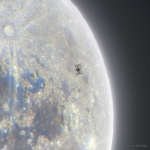 Space Station Silhouette on the Moon
Space Station Silhouette on the Moon
6.12.2021
What's that unusual spot on the Moon? It's the International Space Station. Using precise timing, the Earth-orbiting space platform was photographed in front of a partially lit gibbous Moon last month.
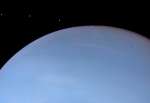 Despina, Moon of Neptune
Despina, Moon of Neptune
3.09.2009
Despina is a tiny moon of Neptune. A mere 148 kilometers across, diminutive Despina was discovered in 1989, in images from the Voyager 2 spacecraft taken during its encounter with the solar system's most distant gas giant planet.
 Despina, Moon of Neptune
Despina, Moon of Neptune
16.01.2014
Despina is a tiny moon of Neptune. A mere 148 kilometers across, diminutive Despina was discovered in 1989, in images from the Voyager 2 spacecraft taken during its encounter with the solar system's most distant gas giant planet.
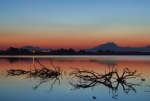 Four Planet Sunset
Four Planet Sunset
13.06.2013
You can see four planets in this serene sunset image, created from a series of stacked digital exposures captured near dusk on May 25. The composite picture follows the trail of three of them...
9.07.1997
These mosaicked images form a color panorama of the region immediately surrounding the Sagan Memorial Station on Mars. The most recent images were recorded on Sol 4 - the 4th day of operations on the martian surface. The composite view reveals the reddish soil and rock-strewn terrain of an ancient martian flood channel.
 An Extreme UltraViolet View of the Comet
An Extreme UltraViolet View of the Comet
30.03.1996
As the Sun floods Comet Hyakutake with ultraviolet light gases in the coma scatter the radiation and fluoresce making the comet a bright source in the ultraviolet sky. The above image made using data...
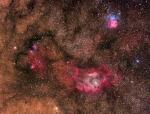 Sagittarius Triplet
Sagittarius Triplet
14.06.2006
These three bright nebulae are often featured in telescopic tours of the constellation Sagittarius and the crowded starfields of the central Milky Way. In fact, 18th century cosmic tourist Charles Messier cataloged two of them; M8, the nebula below and right of center, and colorful M20 at the upper right.
 Sagittarius Triplet
Sagittarius Triplet
4.08.2007
These three bright nebulae are often featured in telescopic tours of the constellation Sagittarius and the crowded starfields of the central Milky Way. In fact, 18th century cosmic tourist Charles Messier cataloged two of them; M8, the nebula below and right of center, and colorful M20 at the upper right.
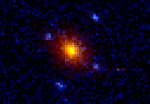 A Galaxy Gravitational Lens
A Galaxy Gravitational Lens
20.12.1995
Sometimes it takes a keen eye to see a good mirage. Around the center of the red galaxy image in the above photograph lie four blue "smudges." Each smudge is actually a different image of the same background quasar. The central galaxy happens to fall directly in the light path of the quasar.
 Saturn's Hyperion: A Moon with Odd Craters
Saturn's Hyperion: A Moon with Odd Craters
28.01.2007
What lies at the bottom of Hyperion's strange craters? Nobody knows. To help find out, the robot Cassini spacecraft now orbiting Saturn swooped past the sponge-textured moon in late 2005 and took an image of unprecedented detail.
|
January February March April May June July |
|||||||||||||||||||||||||||||||||||||||||||||||||